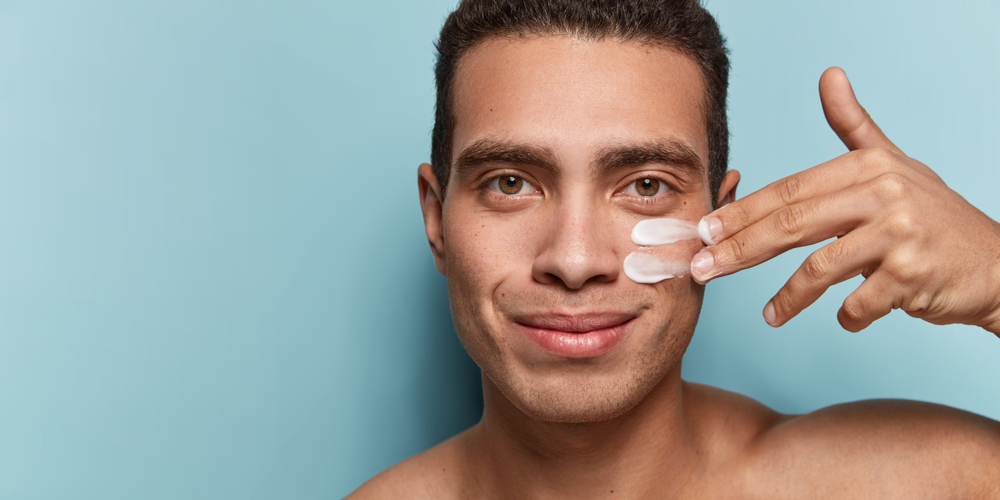The skin is the largest organ in the human body and acts as a defence against injury, disease and infection. It also protects us from the elements, e.g. the sun.
However, things can and do go wrong. The skin is an extremely efficient organ but like anything in life, things can and do go wrong. So it is not unreasonable to expect spots, skin rash, sunburn or cold sores along the way. This applies to both adults and children.
If you are a parent then you will be only too familiar with skin rashes and other conditions such as measles, chicken pox and rubella (German measles). Children are particularly prone to skin conditions but adults too are affected.
This section talks about the structure and function of the skin.

A multi-functional part of the body
It performs a range of functions that include protection, cosmetic, regeneration, regulation and sensation. Plus the condition of your skin is a signifier of your general health. If your skin glows, has a good tone and is soft to the touch then this says that the rest of you is healthy as well.
Conversely, skin which has a pasty or dull appearance, is dry, flabby and itchy says that you are unwell or in poor health.
It also gives clues about your age as well although this is not always accurate. Toned, smooth, healthy looking skin makes you look younger than you are which is why it is so highly sought after. And helps keeps the cosmetic industry in business.
Skin colour
Our skin is available in different colours – known as skin pigmentation – which defines us according to race.
Skin colours range from pale through to dark skinned: for example a white skin is defined as Caucasian, whereas a black skin is defined as Negroid.
This colouring is due to the presence of a pigment called melanin which is found within the skin. This pigment occurs in different amounts in the skin hence the variations in skin colour. Plus it reacts to direct sunlight, turning the skin a darker colour which is better known as ‘getting a tan’. But some skins react better than others to this. The thicker the skin the greater the volume of melanin which means a darker coloured skin.
Tanning and sunburn
Fact: some people tan better than others. If you have Celtic skin (very white skin), lots of freckles or fair skin then you will burn rather than tan. Plus you are a greater risk of developing skin cancer.
Sunburn is discussed in more detail in our skin conditions section.
Dark skinned people or those with a high concentration of melanin will tan however many times they go out in the sun.
Skin type
Genetics plays a part in determining your skin colour but also influences your skin type, i.e. dry or oily. So if either of your parents has oily skin then there is a fair chance you will have the same.
The main factor is the amount of oil produced by tiny glands within the skin known as sebaceous glands. These glands secrete an oily substance or sebum which helps lubricate the skin but an over-production of this causes a variety of skin conditions such as acne.
There are different types of skin which are categorised as:
- Normal/combination
- Dry
- Oily
- Sensitive
- Ageing or sun damaged skin
Normal/combination skin
Many people have combination skin which is defined as skin with medium sized pores, healthy tone and a smooth texture. This is the ideal type of skin to have. Combination skin is a mixture of dry and oily skin.
Dry skin
Dry skin is prone to peeling and flaking especially in warm weather. It often feels tight after washing or showering and shows fine lines and wrinkles more than any other skin type.
Oily skin
Oily skin occurs due to excess production of sebum. This results in a greasy, shiny skin which is prone to blackheads, pimples and other signs of acne. This skin also feels tight on occasion.
Sensitive skin
Sensitive skin is thin and delicate which means it is prone to various skin conditions. If you have this type of skin then you will find that you are prone to blushing, broken veins/capillaries and rashes. Sensitive skin is also prone to allergies as well.
Ageing or sun damaged skin
This type of skin show signs of damage either from excess sunlight or growing old. This damage manifests itself as wrinkles, crow’s feet (lines around the eyes) and sagging skin around the jawline. It feels leathery in tone and has a dull appearance.
Skin anatomy
Your skin consists of three layers:
- Epidermis
- Dermis
- Subcutaneous tissue
The epidermis is the top layer of the skin which acts as a protective barrier against disease and infection. The dermis or middle layer contains blood vessels, lymph glands and sweat glands and controls body temperature. Subcutaneous tissue is the bottom layer of skin and contains fat cells and connective tissue.
Damaged skin
Damaged skin heals itself by forming scar tissue over the wound which differs in colour to the rest of the skin. This may return to normal after a period of time but it depends upon the extent of the injury. A severe injury will result in deep scarring, e.g. keloid scarring and disfiguration in some cases.
